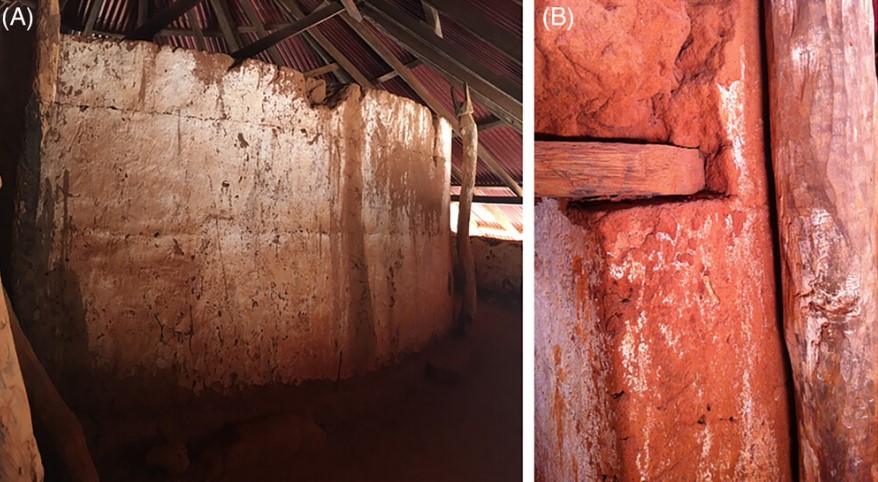Blood and baguettes don’t usually go together in any context, let alone as building materials, yet there’s a palace in West Africa that’s cemented with these bizarre ingredients. Located in the city of Abomey in Benin, the structure is said to have been built using the blood of 41 voodoo sacrifice victims, and a new study indicates that the legend is probably true.
As the capital of the ancient kingdom of Dahomey, Abomey was the seat of 12 successive kings who ruled from the 17th to early 20th centuries. The ninth king, Ghezo, held the throne from 1818 to 1858 and was renowned for his power and military brutality.
As if to highlight the fact that King Ghezo didn’t mess about, the authors of the new study explain that “the alley leading to his hut was [allegedly] paved with the skulls and jawbones of defeated enemies,” while his throne is said to have “rested on the skulls of four defeated enemy leaders.” Within his palace compound, meanwhile, is a funerary hut built from some unconventional materials.
“The binder of the walls is not a standard mortar, but is claimed to be made of red oil and lustral water mixed with the blood of 41 sacrificial victims – 41 being a sacred number in voodoo,” explain the researchers. “The victims were probably slaves or captives of enemy populations.”

The blood-red walls of King Ghezo’s funerary hut.
Image credit: Charlier et al., Proteomics 2024
Within the voodoo culture and religion that continues to permeate Beninese life, blood offerings combined with prayers and sacred water can be used to consecrate buildings or animate wooden structures known as fetishes. In this case, the sacrificial tribute was “charged with protecting what remains of the subtle essence of the deceased king.”
To determine the exact composition of the mortar, the study authors used high-resolution tandem mass spectrometry, which enabled them to characterize the proteins within the cladding. To their surprise, they detected traces of wheat, which was not grown in sub-Saharan Africa until long after Ghezo’s death.
They note, however, that Ghezo was a big fan of the French emperor Napoleon III and often sent diplomatic gifts such as fabrics, weapons, and cowries from Benin to France. It is therefore possible that wheat may have circulated in the other direction, with French baguettes and other baked items being presented to Ghezo and later incorporated into the mortar of his palace as part of a sacrificial offering.
Proteomic results also confirmed the presence of hemoglobin and immunoglobulins from both humans and chickens, proving that the wall binder is indeed made of human blood.
According to the study authors, the death of Dahomey kings was often marked by the sacrifice of up to 500 victims, in a ritual known as the “Great Customs”. Whether or not the blood found in the walls of Ghezo’s tomb was spilled during such an occasion is currently unclear, although the researchers say further DNA analysis may help to reveal exactly how many people involuntarily offered their lifeblood to consecrate the structure.
The study is published in the journal Proteomics.
Source Link: Palace Made Of Human Blood Confirmed As Site Of Voodoo Sacrifices